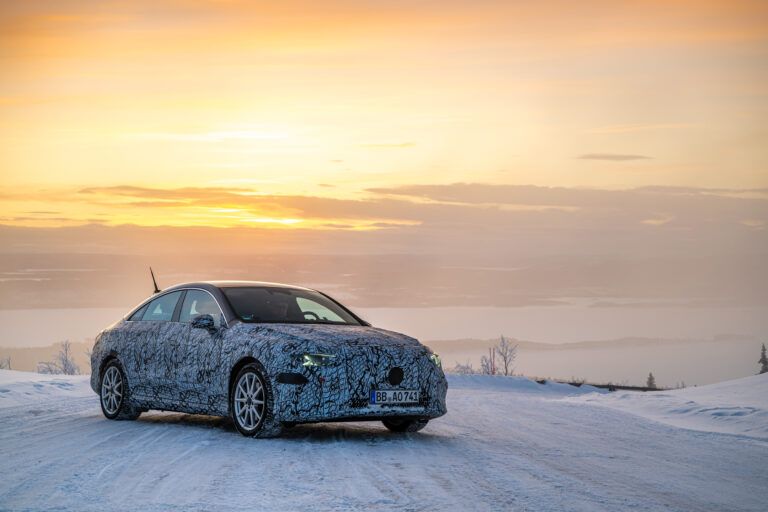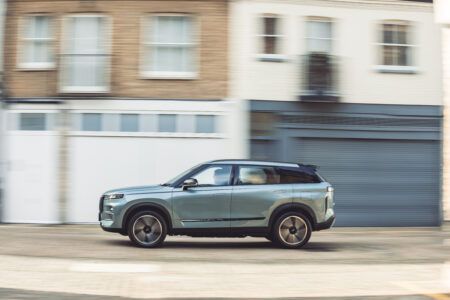EHV braved the cold to find out how Mercedes-Benz’s are utilizing its new VAN.EA platform to put space between luxury high-end vans for private use, and those for commercial purposes
The comment about “one winter of testing” piques my interest when talking to Mercedes-Benz’s engineers in Arjeplog, Sweden. For as long as I’ve spoken to Mercedes-Benz engineers, spending two winters of testing on a single vehicle prior to its production has been something of a rite of passage for them. The sometimes -30 conditions here in the Swedish vehicle testing outpost, where camouflaged pre-production test cars and prototypes virtually outnumber those of the circa 2,000 local inhabitants, are perfect for this gruelling testing. However, for this testing program – specifically for Mercedes-Benz’s new VAN.EA electric architecture – these engineers won’t be flying back to test the same vehicle next year. While they’ll be back to temporarily swell Arjeplog’s population again, they’ll be testing something else.
Because it’s an accelerated test program that is being trialled with the new VAN.EA platform, an EV-specific platform that will underpin the replacement for Mercedes-Benz’s V-Class passenger and commercial Vito offerings. It’s doubly interesting, too, as not only is that new platform exploring a new development timeline, but it’s also bringing elements from passenger car department as well as that of commercial vehicles.
That shift is a direct result of Mercedes-Benz’s ambition to explore the expansion of the super luxury MPV marketplace, somewhere it’s already got a foothold in with the V-Class. But there’s recognition that however many V-Class you see in expensive postcodes around the world, its commercial origins mean it’s unable to assert the true luxury that buyers are increasingly demanding, and Mercedes-Benz wants to offer. Mercedes-Benz admits it’s keen to offer an OEM model to take sales away from the numerous conversion companies that take base models and create luxury vehicles, too. Super luxury raises the idea of the company’s Maybach brand, and while nobody’s admitting to that presently, nor are the denials particularly vociferous.
What is undeniable is the influence of China, both as a potential marketplace, as well as for providing competition – particularly in this model sphere and, notably, on the speed of BEV model introductions. Europe is currently the strongest marketplace for Mercedes-Benz’s current offering with a 60% share and it wants to retain that, and grow, but the company also sees substantial growth opportunity in both China, US and Canada for luxury private vans.
Dr Andreas Zygan, Head of Development at Mercedes-Benz Vans explains the new architecture, saying: “We have built a purpose-built BEV platform with VAN.EA, which allows us to meet the requirements of a purely electric vehicle.” Naturally that means the packaging of the EV battery and motors, but here in a vehicle that could be carrying as many as eight people, safety.
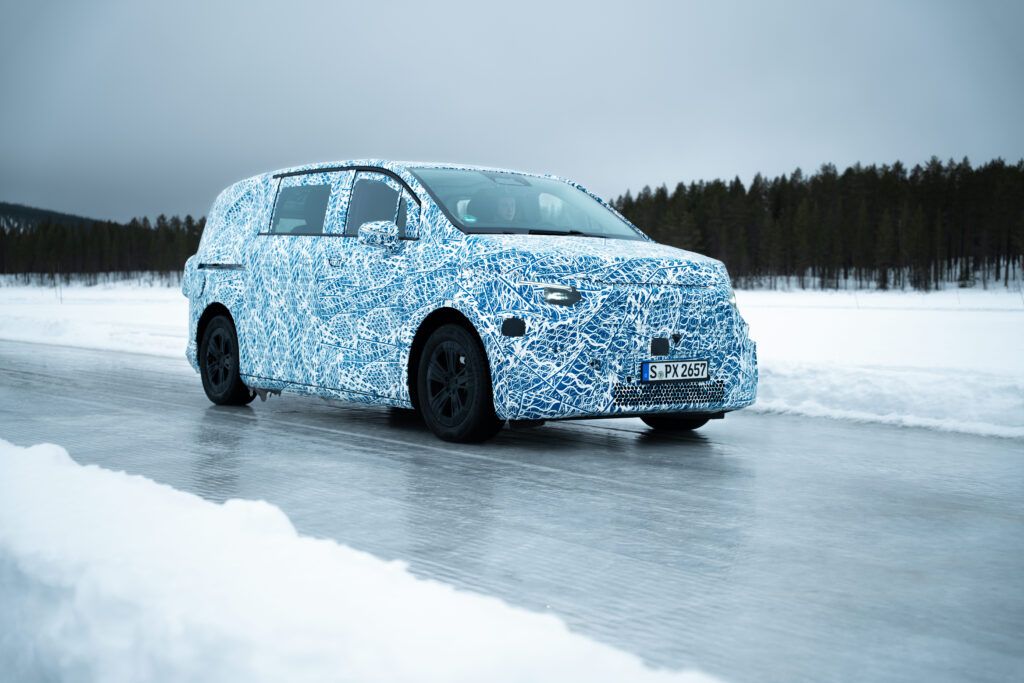 Icing out ICE
Icing out ICE
The requirements for improved NVH over the current model are paramount, too, not least because there’s no masking sound from an internal combustion engine, but also to convincingly fulfil that super luxury ambition at the upper end of the model spectrum. Key here is the construction, Zygan admitting that there’s even more focus on material mix, with targeted lightweight fabrication combining with high-strength steels, with the battery pack itself adding to the vehicle’s stiffness. A van is tricky too, because, as Benjamin Kaehler, Chief Engineer Vans, Mercedes-Benz, explains: “It’s a box, and then you cut holes in it for the doors, the tailgate, which impacts on its stiffness.” Countering that is the targeted use of strengthening materials throughout.
“With this new architecture there are specific advantages for us as an OEM, “ explains Kaehler. “Firstly, we can realize an entire range of privately used vans from practical family bands to exclusive top and variants. Secondly, we can design both mid-size and large bands from gross vehicle weights of 3.5 tons to more than five tons. And thirdly, we can offer both electric vehicles and those with state-of-the-art combustion engines. Nevertheless, the advantage of our new and architecture is that, for the first time, we can realise a clear separation between commercial and privately used vehicles, especially in design. We’re still convinced that the automotive future is fully electric, and it’s our ambition to play an active role in shaping that.”
There’s acknowledgement – and a degree of frustration – that the speed of the transition to EVs isn’t quite as rapid as initially expected, at least regarding customer adoption and acceptance. Meaning this purpose BEV platform has had to be adapted to accept combustion engines. Mercedes-Benz is describing this as VAN.CA (Combustion Architecture). Kaehler explains: “It’s true that our customers’ requirements and market conditions determine the speed of this transition phase, so we will also be offering our customers innovative and highly attractive combustion engines. But the key word is bridging.”
In concrete terms, this means Mercedes-Benz is entering a new era with two versions of its van architecture. “The variance of the van electric architecture, VAN.EA, which are uncompromisingly developed for fully electric driving, will be introduced in 2026,” says Kaehler, “With our second variant of the van architecture, the van with combusted architecture VAN.CA, ultra-modern combustion options will follow.”
In doing this Mercedes-Benz is actively reducing the complexity of its product portfolio, with VAN.EA and VAN.CA platforms featuring around 70% parts commonality, both able to be produced on the same production line, with the obvious benefits for flexibility and economies of scale. That the BEV is the primary focus of the development, with the combustion architecture being the secondary consideration completely changes the previous development for such vehicles.
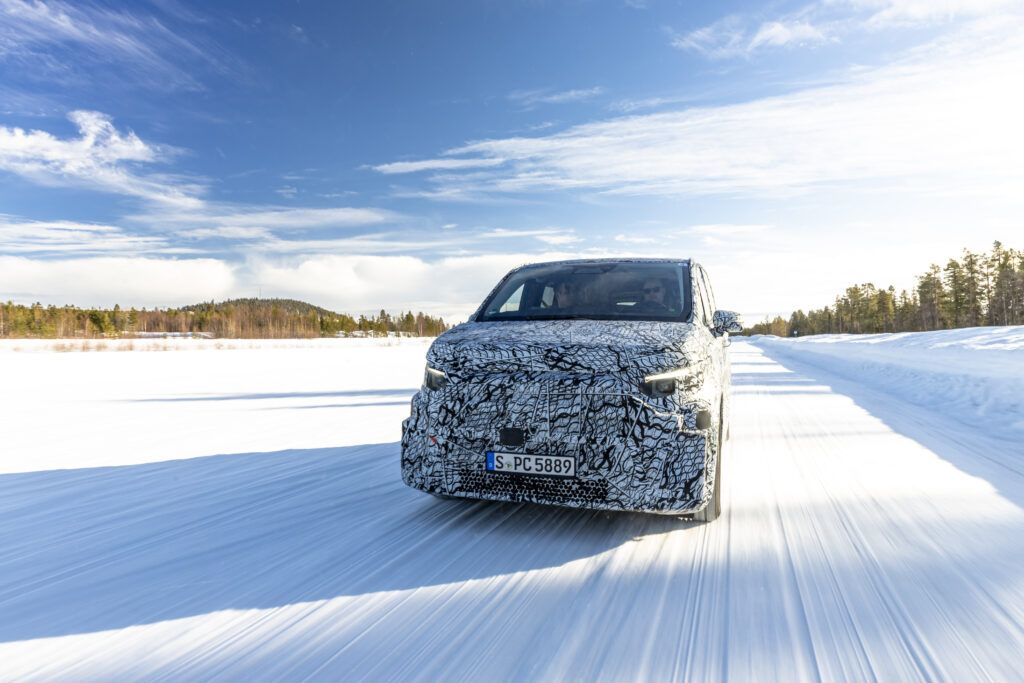 Freezing the data
Freezing the data
It’s not just the focus onto BEVs that has switched with this architecture, but the testing itself. “To achieve our ambitious development goals, we take advantage of all opportunities offered by digitization,” says Kaehler. As such all test vehicles feature real-time data logging, which communicates with what the engineers describe as the ‘power wall’ in a new VR studio. The result is they can reduce real-time testing of all features and focus only on what is required to drive.
“Doing so has allowed us to shorten and parallelise the electric drive timeline, and we’re speaking here of a reduction of around 20%,” explains Kaehler. “With our so-called mission control centre at the van headquarters, we’re able to optimise the data of every test in real time. This cross-functional cooperation between all departments as well as the support of mission control is key. Here, all data has monitored and evaluated. Issues can now be eliminated as quickly as possible and in some cases while driving by means of over the air software updates.”
Each vehicle produces around 2.4 terrabytes of data per day, though there are less prototypes built, and they’re less ‘complete’. Getting in the VAN.EA test vehicle underlines that, with it doing without much of its interior trim, Kaehler saying that they only test the drive, ventilation and heating systems, opposed to the entire vehicle: “You don’t need to build up a complete car here, we can do this in parallel, this new testing is creating a new way of thinking.”
The VAN.EA tests aren’t just pioneering a new potential vehicle segment then, but faster, more efficient means of vehicle development, which it’s clear the testing team engineers, and management are very proud of. The lessons learned will almost certainly be adopted across the passenger car line, the new processes and ideas, and while that might only mean one winter per vehicle, the proliferation of models, and, currently at least, the need to develop combustion versions off this architecture means that the population of Arjeplog isn’t likely to be seeing a reduction any time soon.
VAN.EA Tech
800V technology, a BEV specific architecture, front- or 4MATIC all-wheel drive with the option of air suspension and rear-wheel steering for manoeuvrability and stability, Mercedes-Benz isn’t holding back with its new VAN.EA platform. Necessarily, to penetrate the new upmarket segment it’s aiming for, but the commercial vehicles will also benefit, in driveability, agility and, thanks to the suspension design, load space. The engineers are remaining tight-lipped about the exact specifications but what they do admit is the anticipated WLTP range will be around 500km (around 310 miles).
Naturally, some commercial applications will require less range, and will feature smaller batteries and single axle motor set-ups, but the scalable, flexible nature of the platform is designed to adapt to the varied needs of its customers. Indeed, Mercedes-Benz has stated it’ll produce a CEP-specific version ex-factory for the Courier, Express and Parcel services, with this key marketplace growing at a rate of around 8% annually.
Three modules essentially exist in the platform, the front module comprising of the electric powertrain and front axle, this being the same in all VAN.EA versions as part of Mercedes-Benz’s optimised commonality strategy. The centre section dictates the wheelbase, this essentially a battery carrier, which can be fitted with differing capacity batteries depending on the usage case. The rear section contains the rear axle, which is either unpowered, or gains an electric motor for 4Matic four-wheel drive models.
Like the combustion vehicles the VAN.EA will be offered in camper van guises alongside the passenger and luxury models, with the passenger vehicles gaining the option of air-sprung suspension which will offer adaptive damping and the ability to lower and raise the vehicle for easing ingress/egress. With production versions due to arrive in 2026, and this vehicle having undertaken its final, and only, winter test – in EA guise at least – Mercedes-Benz will continue to drip-feed info on the VAN.EA over the coming months.
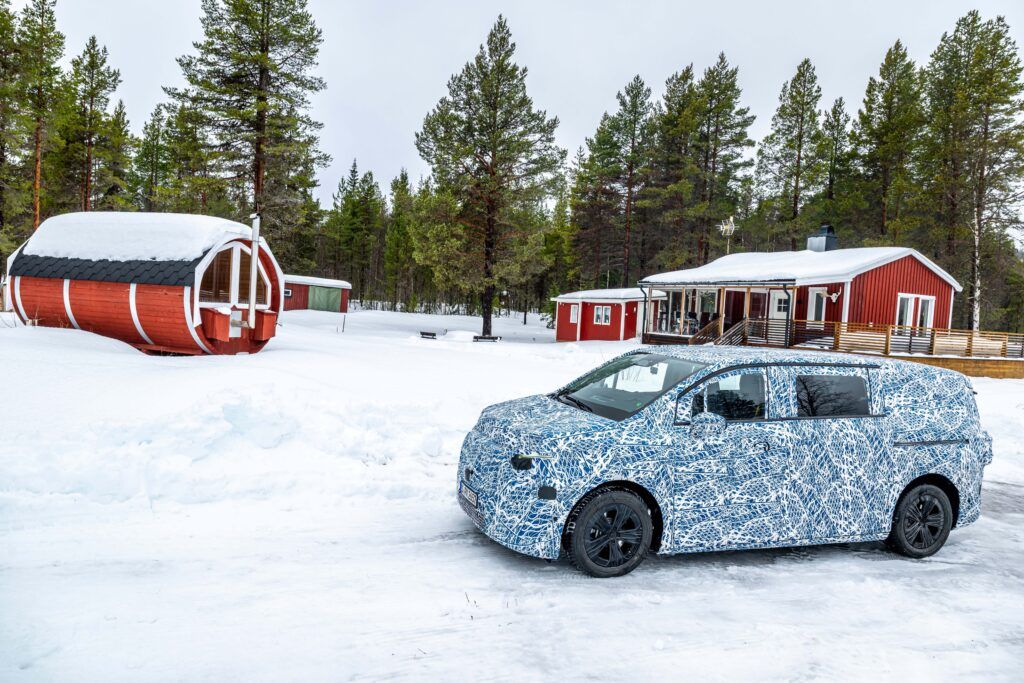
CLA and GLC BEVs testing drop-in
While in Arjeplog we had the opportunity to drop in on the testing of Mercedes-Benz’s CLA and GLC BEVs. The production version of the CLA will be unveiled this Spring, with the GLC anticipated to follow it later in the year. The CLA is based on Mercedes-Benz’s MMA electric architecture, it features 800V electronics with charging possible at a rate of up to 320kW. Either front or 4Matic four-wheel drive, the CLA borrows heavily from Mercedes-Benz’s record-breaking Vision EQXX, with the production CLA promising a potential range for consumption of 12kWh/100 and a WLTP range of over 750km. That’s with the largest capacity battery, which the engineers admit is 85kWh in capacity (a smaller 58KWh battery will also be offered). The MMA platform is either rear or all-wheel drive, with the rear motor featuring a two-speed transmission to offer the best in performance and economy.
That permanently synchronous machine compact rear motor is 200kW in the rear-drive models, with the 4Matic four-wheel drive versions gaining an 80kW motor on the front axle with a DCU disconnect for maximum efficiency. Key elements from that EQXX includes a productionised version of its multi-source heat pump, which Mercedes-Benz claims can produce 3kW of output from just 1kW of energy, the system using battery waste heat and the ambient air for maximum efficiency. The battery chemistry on the larger battery also differs from that on the smaller one, with the 85kWh pack featuring silicon carbide anodes to improve energy density over conventional batteries by around 20%.
Aiding that efficiency is a newly developed braking system that can recoup up to 200kW when braking, Mercedes-Benz engineers having worked tirelessly on a new braking system that feels more natural than most EVs, blending the regeneration and physical friction brakes to lessen the vagueness so often associated with EV braking systems, particularly during that difficult transition from regeneration to friction braking.
That technology, as well as the battery chemistry, two speed motor and decoupling front motor (on 4Matic) versions is all also due to feature on the GLC. This new SUV BEV is an important one for Mercedes-Benz, as the GLC is the company’s best-selling model. On evidence of our brief drive of both, and the commitment that the engineers have to them, these new BEVs will have the range, driving dynamics and charging potential to make them highly compelling alternatives to the existing and future competition.


